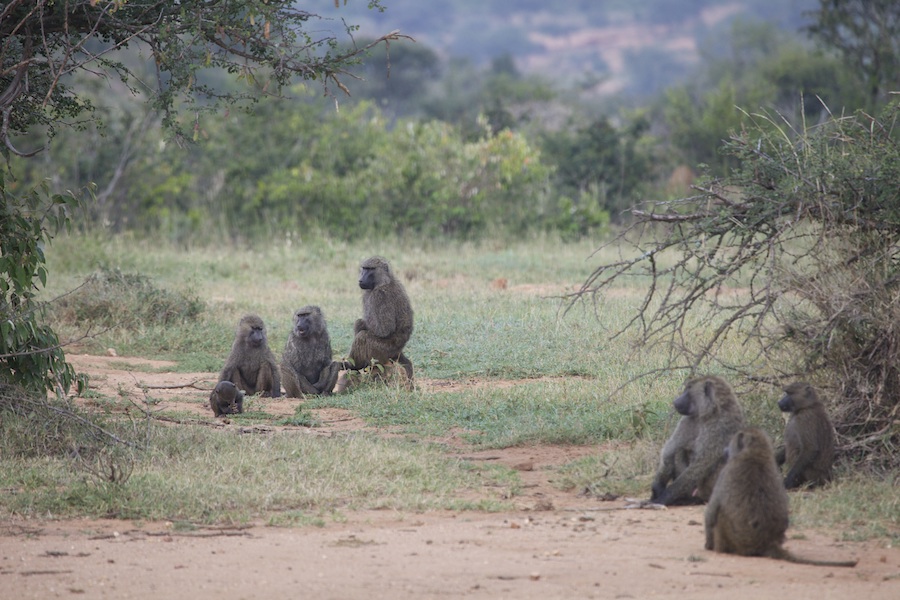
Simple social rules help predict where wild baboons will position in groups
New research on the spatial organization of baboons was recently published in the journal Proceedings of the Royal Society. UC Davis assistant professor and senior author Margaret Crofoot contributed to the data collection portion of this project.
Over eight days, 26 wild baboons in Kenya were affixed with collars which constantly monitored their locations. The collected data was analyzed to create a model of spatial organization for each baboon in the troop.
“We did this study where we collected simultaneous and continuous GPS data, so we were recording at really high resolutions, 1 GPS location per second,” Crofoot said. “We knew where everyone was all the time for a baboon troop over a relatively short period of time.”
The research team found results suggesting animals use cues from the local neighborhood of group mates to determine how to organize and place themselves. Some animals rely on a couple of close neighbors, while others used larger neighborhood networks to determine their placement.
“We were all surprised at how such a simple mechanism, which is to follow a smaller or larger number of neighbours, can robustly generate organisation that from the outside seems so complex,” said lead author Dr. Damien Farine in an email interview. “When you sit down and think about it, or think about the mathematics behind it, it’s pretty obvious, yet [no one] had really thought about this before.”
The science of how animals communicate and behave together in groups has fascinated researchers for centuries. Whether admiring birds flying together in mass migrations or witnessing massive schools of fish weaving and bending to steer clear of predators, complex behavioral activities have been an intense area of study for researchers.
“For food, for predators, where you are in your group is really important,” Crofoot said. “But, of course, where you are in your group is an emergent property. You don’t choose where you want to be independent of the choices of your group mates because it’s a dynamic system.”
The findings contribute observational evidence to scientists and researchers studying how animals organize themselves dynamically in social groups. Certain confounding factors were accounted for, but kinship ties were not considered in this study.
“We looked at the influence of age, sex and dominance, and found that there is relationship to all those things,” said co-author Dr. Ariana Strandburg-Peshkin. “There was also variation among the individuals. Even though, on average, the adults tended to be more on the periphery than the subadults, there were some adults who did tend to be more central. So it’s not just about your age and sex, it can also be about your individual identity.”
Theories regarding spatial organization of animals have been considered for decades, and confirmation of social cues such as neighborhood size helps researchers understand more about how animals group together and form complex webs of interactions.
“The strength of this project is that it integrates high-tech data collection, state-of-the-art analytical methods and new theory,” Farine said. “Most field studies suffer from a key weakness which is that the study is only observational — it is only by doing experiments that you can really test a hypothesis.”
New directions for this research include experimental studies of spatial organization and studying multiple large baboon troops simultaneously. Adjusting tracking methods to include kinship data among animals would strengthen future studies.
Written by: George Ugartemendia — science@theaggie.org



